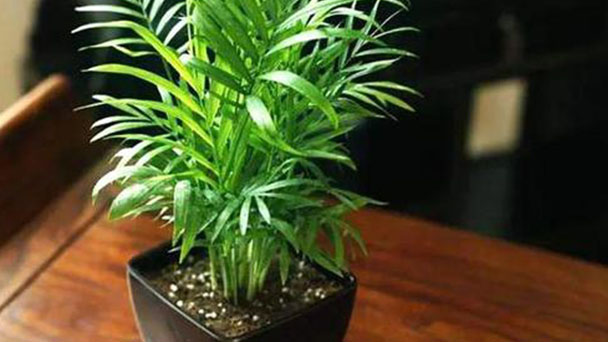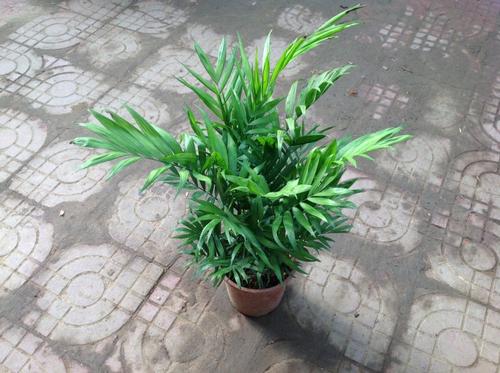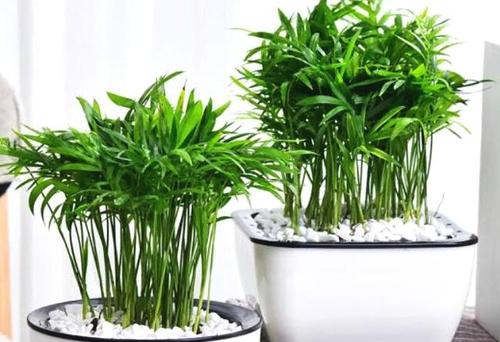How to Propagate Parlor Palm
Written by Maggie
Dec 24 2021

Parlor palm plants are small, graceful and graceful. The leaf color is a dark green light, flat leaves, adult plants such as umbrella, just like a small coconut tree. So how does Parlour palm propagate? Let's see the propagation methods of Parlor palm.

Parlor Palm - Most Common House Plant
Propagating Parlor Palm By Seeds
Applying the sowing propagation method of Parlor palm from spring to summer is the appropriate period. Because the endocarp is hard and the mesocarp contains substances that inhibit germination, seeds usually germinate slowly and irregularly. The suitable temperature for seed germination is 30-35 degrees Celsius. At higher temperatures, the seed can germinate earlier, and the germination duration is shorter, and the final germination rate is also higher. It takes about 1-1.5 months to germinate after sowing at 35 degrees Celsius, 1.5 to 2 months after sowing at 30 degrees Celsius, and 4-6 months after sowing at 25 degrees Celsius. Heat preservation is needed for winter sowing. Before sowing propagation of Parlor palm, soak in water at room temperature for 1-2 days, after sowing, cover with soil about 1 cm, water to keep fit, about 1-2 months after germination into seedlings, after 2-3 times of fake planting and fertilizer cultivation, and then transplanting.
Propagating Parlor Palm By Division
Spring to autumn was the best time for division propagation of Parlor palm, and the best time for planting was spring and repot. Plant growth can be exhumed when crowded, every 1-3 plants cut another plant. Humus rich loam or sandy loam is the best cultivation soil, drainage is good; Potted plants mixed with leaf rot soil, peat moss, river sand and a small amount of base fertilizer, more vigorous growth. Read more how to grow and care for Parlor Palm.

Parlor Palm - one of the best indoor trees
Propagating Parlor Palm By Cuttings
Parlor Palm can be used for cutting propagation, but the survival rate is very low. Generally, cutting method is not used for propagation, let alone cutting in water. If you want to try cutting at home, you can prepare a substrate with good air permeability and drainage, disinfect and sterilize, cut the cuttings with good growth, and then cut them into the substrate to maintain the temperature and humidity to wait for the survival of cutting. However, it is not recommended to try propagating parlor palm by cuttings at home.
What are the Propagation Tips of Parlor Palm?
1. Control temperature
Parlor Palm is tolerant of shade and likes warmth. It grows fastest between 20-24 degrees Celsius. Once the ambient temperature is lower than 13 degrees Celsius, the plant will enter the dormancy period and stop growing. Generally, the temperature should be controlled within 30 ℃ in summer, and the overwintering temperature in winter should not be less than 10 ℃.
2. Pay attention to the light
As an indoor ornamental plant, Parlor Palm prefers a semi shady environment. During cultivation, it is best to place it in a place with scattered light and maintain a good ventilation environment. When the light is too strong, we should do a good job of shading. We can use 60% shading net for shading treatment to avoid the problem of yellow and scorched leaves due to too strong light.
3. Proper amount of water and fertilizer
Parlor Palm is a water-loving plant. In order to ensure that the plant can grow vigorously, it is best to keep the basin soil moist for a long time, especially increase the frequency of watering during the growth period. The amount of nutrients absorbed by Parlor Palm during dormancy is relatively small, so it can be watered when the dryness of basin soil reaches two-thirds. In addition, when the surrounding air is too dry, spray some water on the blade surface in time to avoid dehydration.
Different from the water demand, Parlor Palm does not need much fertilizer. Generally, it can maintain the fertilization frequency once a month during the growth period. The application of fertilizer is mainly diluted liquid fertilizer, and compound fertilizer and nitrogen fertilizer can be applied alternately. When Parlor Palm is in dormancy in autumn and winter, fertilizer can no longer be applied.
4. Pest control
The common diseases of Parlor Palm are mainly yellow leaf disease and black spot. Yellow leaf disease is mainly caused by factors such as excessive application of light, water and fertilizer, which can be avoided by paying attention to maintenance skills during cultivation. Black spot is mostly caused by poor ventilation. Tobuzin or chlorothalonil diluent can be used for control. There are few pests in Parlor Palm, and the common ones are mainly scale insects, which can be sprayed with chlorpromazide diluent for control.
The above is about how Parlor Palm breeds. I believe you must know something about it through reading the content of this article. When propagating Parlor Palm, as long as you master the above skills, you can ensure that the plants grow vigorously and the leaves are green and not withered.
Read Next:
Best 15 Indoor Plants for Low Light 2021
Latest Updated
- Benefits of Bugleweed - 7 Science-backed Health Benefits
- Bugleweed Dangers & Side Effects - Is It Poisonous?
- How to Plant Evergreen Trees - What You Should Know
- When to Plant Evergreens - Grow Guide for Evergreen Trees
- 12 Wonderful Evergreen Shrubs for Your Garden
- 12 Popular Evergreen Plants with Pictures for Beginners
- When And How To Prune A Lilac Bush Like a Pro
- How to Grow & Care for Lilac Vine (Hardenbergia Violacea)
- Japanese Lilac Tree (Syringa Reticulata) Care & Propagation Guide
- Shumard Oak Pros and Cons - What to Know
Popular Articles
- Winter maintenance of Antirrhinum Majus
- How to Grow Terminalia Mantaly Tree
- How to Grow and Care for Crossostephium Chinense
- How to grow Antirrhinum Majus in spring
- Peristeria Elata (Dove Orchid) Profile: Info & Care Guide
- Underwatered Snake Plant (Sansevieria Trifasciata) - Signs And How To Fix
- How to Care for Brazilian Jasmine Plant (Mandevilla Sanderi)
- How to Grow & Care for Graptopetalum Purple Delight in Summer
- Rosa Chinensis (China Rose): Plant Growing & Care Tips
- How to Care for Baby Sun Rose (Aptenia Cordifolia)